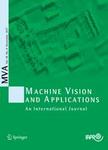版权所有:内蒙古大学图书馆 技术提供:维普资讯• 智图
内蒙古自治区呼和浩特市赛罕区大学西街235号 邮编: 010021

作者机构:Taiyuan Univ Technol Coll Mech & Vehicle Engn Taiyuan Peoples R China Shanxi Key Lab Precis Machining Taiyuan Peoples R China
出 版 物:《MACHINE VISION AND APPLICATIONS》 (计算机视觉与应用)
年 卷 期:2021年第32卷第4期
页 面:92-92页
核心收录:
学科分类:0808[工学-电气工程] 08[工学] 0812[工学-计算机科学与技术(可授工学、理学学位)]
基 金:Key research and development Plan in Shanxi Province of China [201803D421045]
主 题:3D reconstruction of reverse engineering Slice image Image contour sequence Sub-pixel subdivision edge detection NURBS surface reconstruction
摘 要:It is often difficult to obtain the high-precision inner cavity contour size and 3D model of parts and components in reverse engineering. This paper proposes a method that uses a sequence of section images of a part to reconstruct their 3D models. This method cuts the part layer by layer to obtain the sectional images and extracts the 3D information of the sectional image contours to generate point clouds. These point clouds are then used to reconstruct a 3D model of the part. High contrast material is used to embed the target part for pre-processing. A machining centre was used to mill the part layer by layer vertically to acquire high precision section profile images. The improved Canny edge detection operator was combined with the spatial moment sub-pixel subdivision algorithm to improve the edge detection accuracy. The camera imaging model algorithm transforms the coordinates of the image edge position to obtain a high-precision 3D point cloud of the part. The 3D solid model of the target part was obtained using NURBS surface reconstruction. The results show that the 3D model reconstruction method using the profile sequence of the cross-sectional images is independent of the complexity of the part s structure and the complete internal structure of the part can be obtained. The proposed edge detection algorithm significantly refines the edge position of the contours in the cross-sectional image and the measurement accuracy was improved. This method improves the minimum deviation to 50 mu m. The shape accuracy of roundness, cylindricity and perpendicularity of the structure is high. The proposed method can meet the reverse precision requirements in general precision machining.